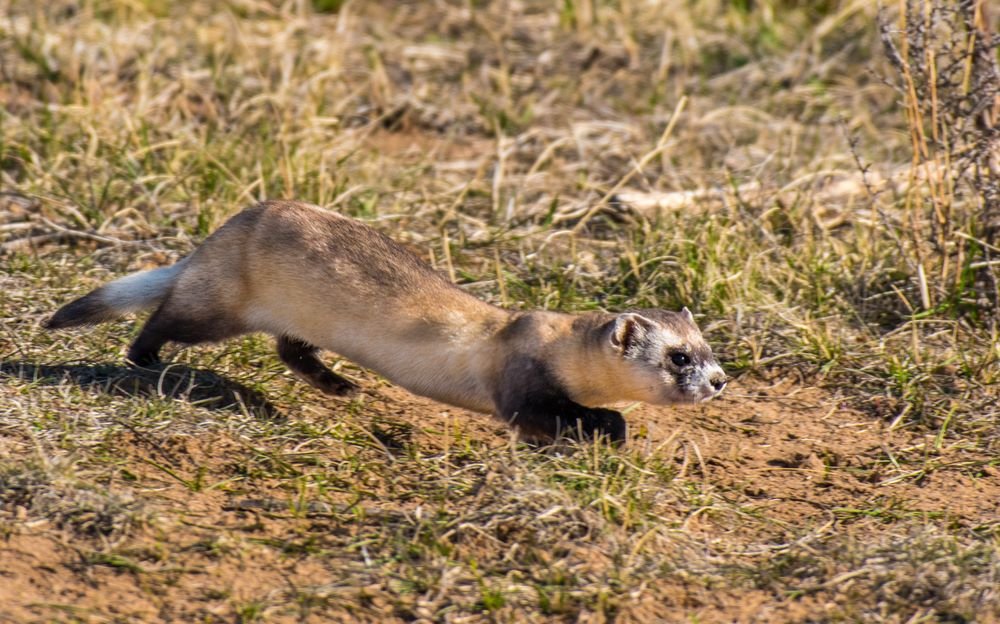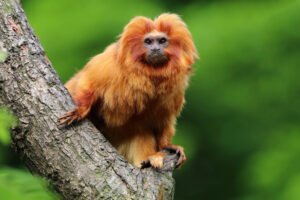Have you ever wondered that What Is The Current Population Of Black Footed Ferret In The World? Currently, the wild population of Black-footed ferrets is around 370, according to WWF.
Black footed ferrets are small, charismatic mammals that have captured the hearts of many wildlife enthusiasts. Unfortunately, their population numbers have dwindled over the years, making them one of the most endangered species on the planet.
Table of Contents
Characteristics of Black-Footed Ferrets
The black-footed ferret is about the size of a mink and looks a lot like the European polecat and the Asian steppe polecat. It is mostly active at night and lives alone, except when breeding or raising young. Prairie dogs make up up to 90% of its food.
The black-footed ferret’s body is long and thin, and its paws, ears, tail, and parts of its face are all marked with black lines. The nose is short, and the forehead is arched and wide. It doesn’t have many whiskers, and its ears are small, triangular, straight, and wide at the base.
It has a long neck and short, thick legs. The toes have sharp claws that are just slightly curved. The claws are hidden by the hair that covers both sides of the feet, all the way down to the toes.

Current Population Of Black Footed Ferret Estimates
The black footed ferret population has experienced a tumultuous history, with numbers declining drastically due to habitat loss, disease, and the decline of their main prey, prairie dogs.
Today, their population remains critically low. We will explore the latest estimates and shed light on the challenges faced in restoring their numbers.
Ecology

Extraordinary steps are needed to keep rare species from going extinct. One of the most threatened animals in North America is the black-footed ferret. Black-footed ferrets were thought to be extinct until they were found again in Wyoming in 1981. Since then, many groups have worked together to give the species a second chance at life.
Conservation Efforts
Various organizations and initiatives have dedicated themselves to the conservation of black footed ferrets.
- One notable organization at the forefront of this effort is the World Wildlife Fund (WWF).
- WWF is in charge of the recovery attempts and works with other conservation groups, land management agencies, tribes, and landowners to make sure that black-footed ferret populations can be sustained.
- WWF and its partners take care of current ferret sites and set up new reintroduction sites by moving prairie dogs to make more space for ferrets.
- They also work to protect prairie dog colonies from sylvatic plague and study oral vaccines to make them safer from this disease.
Threats to the Black Footed Ferret

Black footed ferrets face numerous threats which have contributed to their endangered status.
- Habitat loss
- Disease outbreaks
- Limited genetic diversity
- Decrease in prairie dog populations
These all pose significant challenges to their survival.
The Role of Zoos and Breeding Programs
Zoos and breeding programs play a vital role in black footed ferret conservation. These facilities provide a safe haven for captive populations, engage in successful breeding programs, and contribute to reintroduction efforts.

How the Public Can Help
Conservation is a collective effort, and individuals can make a difference in the conservation of black footed ferrets. We will provide practical tips and suggestions for how the public can contribute, from supporting conservation organizations to raising awareness and engaging in sustainable practices.
Conclusion
The conservation of black footed ferrets is crucial for the preservation of biodiversity and the health of our ecosystems. Through collective action and awareness, we can ensure the survival of this remarkable species. Let us join hands in championing their cause, supporting conservation initiatives, and celebrating the resilience and beauty of black footed ferrets.
Also Read: How many black tigers are left in the world





